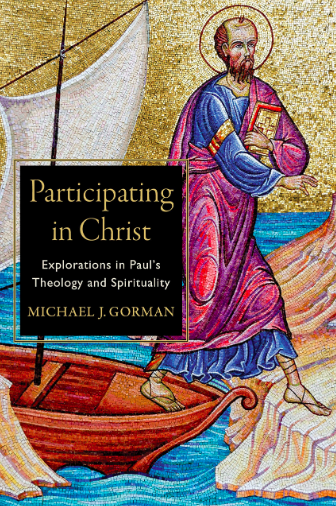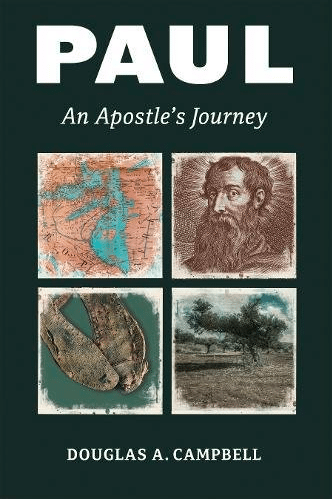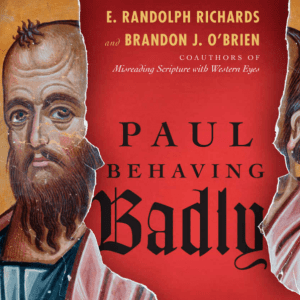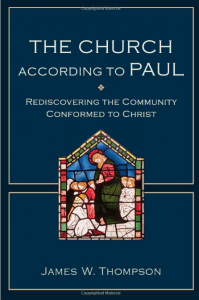 NT Wright, in his Paul and the Faithfulness of God, makes a claim many need to hear today, both those who diminish the church for kingdom work and those who do “Pauline theology” exclusively through the lens of soteriology and make the church where the saved land on Sunday mornings. Not so for Wright: the church is where Paul’s worldview begins. At the core of Paul’s worldview was symbolic praxis and the first one is church.
NT Wright, in his Paul and the Faithfulness of God, makes a claim many need to hear today, both those who diminish the church for kingdom work and those who do “Pauline theology” exclusively through the lens of soteriology and make the church where the saved land on Sunday mornings. Not so for Wright: the church is where Paul’s worldview begins. At the core of Paul’s worldview was symbolic praxis and the first one is church.
No: we are simply asking the question: what were the main symbols, and symbols-in-action, of Paul’s newly envisaged and constructed world? And we are about to find, large as life, on the basis not of a theological a priori but simply by asking this question, scratching our heads, and looking around, that the primary answer is the ekklēsia: its unity, holiness and witness (385).
The theme of the unity of the church is at the core of Paul’s worldview, his new social praxis, and Galatians 3:28 counters not only what is traditionally set alongside it from Judaism but also from the Greek world (I thank God I’m not…. all countered by Paul). That’s the unity for which he strives and the unity that drives so much of his mission. Wright then pores over 1 Corinthians through the theme of the unity of the church, and then over to Romans 9-11 … all in an effort to show how significant the church was to Paul. It was a family, a fictive kinship, marked by hospitality. Here is his summary, reformatted for easier reading on this blog:
First, the gospel message of Jesus the Messiah created a new world with new inhabitants, no longer defined by the specifics of Jewish law, but not seeking as a replacement any of the standard symbols of pagan identity.
Second, this new community could sometimes be thought of as the new Temple, sometimes as a human body, in both cases not simply drawing on obvious and available metaphors but making powerful symbolic statements.
Third, this new community was to learn to live as a family, with all that this would entail.
Fourth, we might suppose that this new community, being itself such a powerful symbol of a radically new worldview, might be regarded as a considerable threat to existing power structures.
Fifth, this new symbol was rooted in a monotheism which, while having the recognizable shape of Jewish rather than pagan styles of monotheism, had come to fresh expression precisely through Jesus the Messiah.
Sixth, this new community was formed and characterized at every point by its conformity to the Messiah himself, specifically in his crucifixion and resurrection.
We might also then say a seventh thing. It will be noticed that in these six points, growing naturally out of the analysis of Paul’s symbolic praxis in the letters so far studied, we have just summarized Ephesians 2.11—3.21. Perhaps symbolic or even sociological analysis may yet achieve the revolution in scholarly assumptions that neither the ‘new perspective’ nor the revived ‘apocalyptic’ school, nor even the ‘political Paul’, have so far managed to do, though all might have tumbled to it at any point in recent discussion: Ephesians, long sidelined in western protestant Pauline discussions, turns out to articulate rather precisely the very points which have emerged, on the basis of the ‘main’ letters, from a detailed worldview-study of Paul’s central symbol (402).
Wright then turns to “Messiah” in symbolic praxis to observe that all the symbols find their re-expression in Jesus, in whom everything is revised to fit into a Messiah who was crucified and resurrected, leading to a people marked by cross and resurrection. Jesus is now The Lord. Wright turns this into the gospel (and he gets to using the word “gospel” as a verb — I like that!):
Put all this together, and what do we have, as the central, shaping marker of the new worldview, taking the place and bearing the weight that the Jewish symbols had borne within the worldview of Saul of Tarsus? We have precisely the gospel, the euangelion, the ‘good news’, rooted in the ‘good news’ spoken of in the Great Prophet, confronting the ‘good news’ carved in stone around Caesar’s empire. We have the symbol by which Paul declared that he was himself defined, the anchor of his own vocational mindset: Paul, an apostle, set apart for the good news of God; I am not ashamed of the good news, because it is God’s power for salvation to all who believe; the Messiah did not send me to baptize, but to preach the gospel; woe to me if I do not announce the good news; I do it all for the sake of the good news; let me remind you of the gospel which I announced to you, which you received, in which you stand firm, through which you are saved; the gospel of the glory of the Messiah, who is the image of God; your confession of faith in the Messiah’s gospel has brought you into proper order; let me remind you that the gospel which was gospelled by me was not something I received from other people; I did it so that the truth of the gospel might be preserved for you; my calling is to gospel to the gentiles the unsearchable riches of the Messiah; what has been happening to me has been for the advancement of the gospel; let your public life be worthy of the gospel of the Messiah; don’t move away from the hope of the gospel; our gospel was not in word only, but in power, in the holy spirit, and in full conviction; I wanted to keep Onesi- mus with me, to serve me on your behalf in the bonds of the gospel. The gospel, the gospel, the gospel. It defined Paul. It defined his work. It defined his communities. It was the shorthand summary of the theology which, in turn, was the foundation for the central pillar for the new worldview. It carried God’s power. That was just as well: the worldview, and those who lived by it, were going to need it (410-411).
Other areas of praxis, each discussed at varying lengths, include prayer (and mysticism) and Scripture and baptism and eucharist. On baptism:
So, to sum up: baptism in the worldview of Paul’s communities, and within his own mindset, emerges not from pagan mystery religions but from the deep roots of Jewish covenantal story and covenantal symbolism. It is differentiated from the latter precisely because of the crucifixion and resurrection of Israel’s Messiah and the effect that that has had in generating the Mes- siah’s people as a worldwide family. The passage in Colossians appears to form something of a mid-point between Galatians and Romans. In Galatians, the emphasis is on the renewed multi-ethnic family; in Romans (as in 1 Corinthians 10, for that matter), it is on the fact that the family leaves behind the realm of sin; in Colossians, there is a bit of both, and in 1 Corinthians 1 and 12 a reaffirmation of unity when faced by a different kind of threat. But the point for our present purposes is that baptism is clearly a key ritual (in the sense noted above) which serves to mark out this people inthis way as part of this single and united family, grounded in the messianic monotheism we have already described (427).











